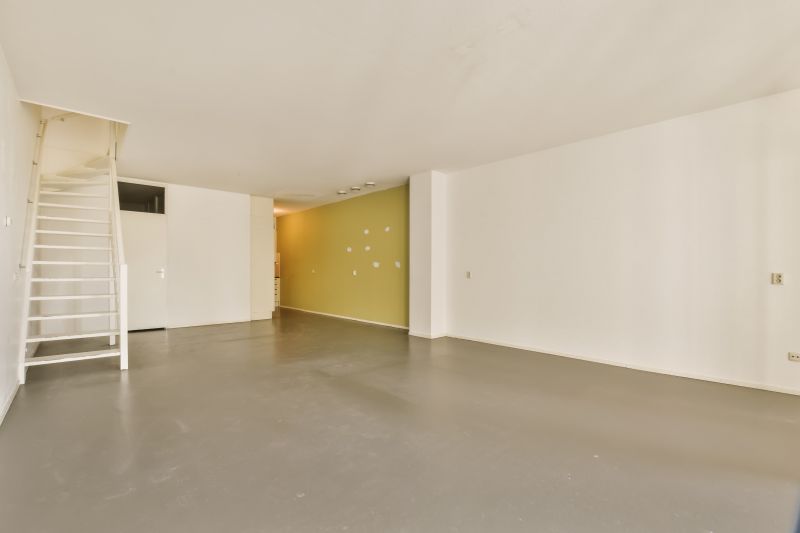Favorite Basement Finishings Items for a Seamless Renovation Experience
Select reliable and user-friendly products to simplify your basement finishing project and ensure lasting results.
 Finishing a basement can significantly enhance the usability and aesthetic appeal of a home. When selecting products for basement finishing, it is important to consider materials that are durable, moisture-resistant, and suitable for below-grade environments. Common options include various types of wall panels, flooring solutions, ceiling options, and insulation materials that help create a comfortable and functional space. Proper planning and selection of the right products can lead to a finished basement that is inviting, safe, and tailored to the homeowner's needs.
Finishing a basement can significantly enhance the usability and aesthetic appeal of a home. When selecting products for basement finishing, it is important to consider materials that are durable, moisture-resistant, and suitable for below-grade environments. Common options include various types of wall panels, flooring solutions, ceiling options, and insulation materials that help create a comfortable and functional space. Proper planning and selection of the right products can lead to a finished basement that is inviting, safe, and tailored to the homeowner's needs.
Top Overall Option
Moisture-Resistant Wall Paneling
Moisture-resistant wall paneling offers a versatile and durable solution for basement walls. Designed to withstand humidity and potential water exposure, these panels are easy to install and maintain. They come in a variety of finishes and textures, allowing customization to match different styles. Properly installed moisture-resistant paneling can help create a clean, finished look while providing an extra layer of protection against mold and mildew in below-grade environments.
Types of Products For Basement Finishings
Drywall and Moisture-Resistant Boards
Specialized drywall options designed for damp environments to improve wall durability.
Vinyl Flooring
Waterproof flooring solutions that are easy to install and maintain, suitable for basements.
Rubber Tiles
Flexible, resilient flooring ideal for workout areas or playrooms in basements.
Engineered Wood Flooring
A stable wood alternative that resists moisture and warping, suitable for finished basements.
Drop Ceiling Systems
Suspended ceilings that facilitate access to utilities while providing a polished look.
Insulation Panels
Insulation options that prevent heat loss and control moisture buildup.
Ceiling Tiles
Acoustic and decorative tiles for finishing basement ceilings.
Basement Egress Windows
Windows that provide natural light and meet safety requirements for basement exits.
Dehumidifiers
Devices that help control humidity levels and prevent mold growth.
Lighting Fixtures
Energy-efficient lighting options to brighten basement spaces effectively.
Storage Shelving
Durable shelving units designed for basement storage needs.
Soundproofing Materials
Materials to reduce noise transfer between floors or rooms.
Electrical Outlets and Switches
Weatherproof and code-compliant electrical fixtures for basement use.
Basement Stairs
Safe and sturdy stair systems for basement access.
Waterproof Paints
Specialized paints that add an extra layer of moisture resistance to walls.
Decorative Wall Coverings
Panels, wallpaper, or other finishes to enhance aesthetic appeal.
Popular Choices
A popular waterproof flooring option with a variety of styles and finishes.
Commonly used for basement walls to resist humidity and water exposure.
Widely chosen for basement ceilings to allow access and improve acoustics.
Frequently used to maintain optimal humidity levels in finished basements.
Popular for providing bright, energy-efficient illumination.
Preferred in home gyms for durability and shock absorption.
Increasingly installed for safety and natural light.
Chosen for additional wall protection against moisture.
Commonly used for organizing basement storage areas.
Popular in entertainment or workshop areas for noise reduction.
Favored for cost-effective and long-lasting lighting solutions.
Often selected for thermal insulation and moisture control.
Chosen for sound absorption and aesthetic appeal.
Essential for safety in damp basement environments.
Used to add visual interest and style to basement walls.
Popular for safety and design in basement stairways.
Wall treatments are a crucial aspect of basement finishing. Options range from drywall with moisture-resistant coatings to specialized paneling that resists mold and mildew. Flooring choices are equally diverse, with products designed to withstand damp conditions, such as vinyl planks, rubber tiles, or engineered wood. Ceiling options often include suspended or drop ceilings, which allow easy access to plumbing and electrical systems while providing a clean, finished look.
Lighting and electrical fixtures also play a vital role in creating a welcoming basement environment. Proper lighting enhances safety and functionality, especially in areas designated for recreation, work, or storage. Ventilation and dehumidification systems are essential to control moisture levels and prevent mold growth, ensuring the space remains comfortable over time. Selecting products that are specifically rated for below-grade use helps ensure longevity and performance of the finished space.
Key Buying Considerations
- Moisture resistance of materials to prevent mold and mildew growth.
- Compatibility of products with existing basement conditions and layout.
- Ease of installation and available DIY options.
- Durability and longevity of the materials used.
- Aesthetic options and how they match your design vision.
- Safety features, especially for stairs, egress windows, and electrical fixtures.
- Maintenance requirements for different products over time.
- Cost and budget considerations for the entire finishing project.
- Compatibility with heating, cooling, and ventilation systems.
- Local building codes and regulations related to basement finishing.
- Ability to accommodate future modifications or expansions.
- Environmental factors such as humidity levels and potential water intrusion.
- Soundproofing capabilities if creating entertainment or workout areas.
- Availability of warranties or customer support from suppliers.
- Energy efficiency of lighting and insulation options.
